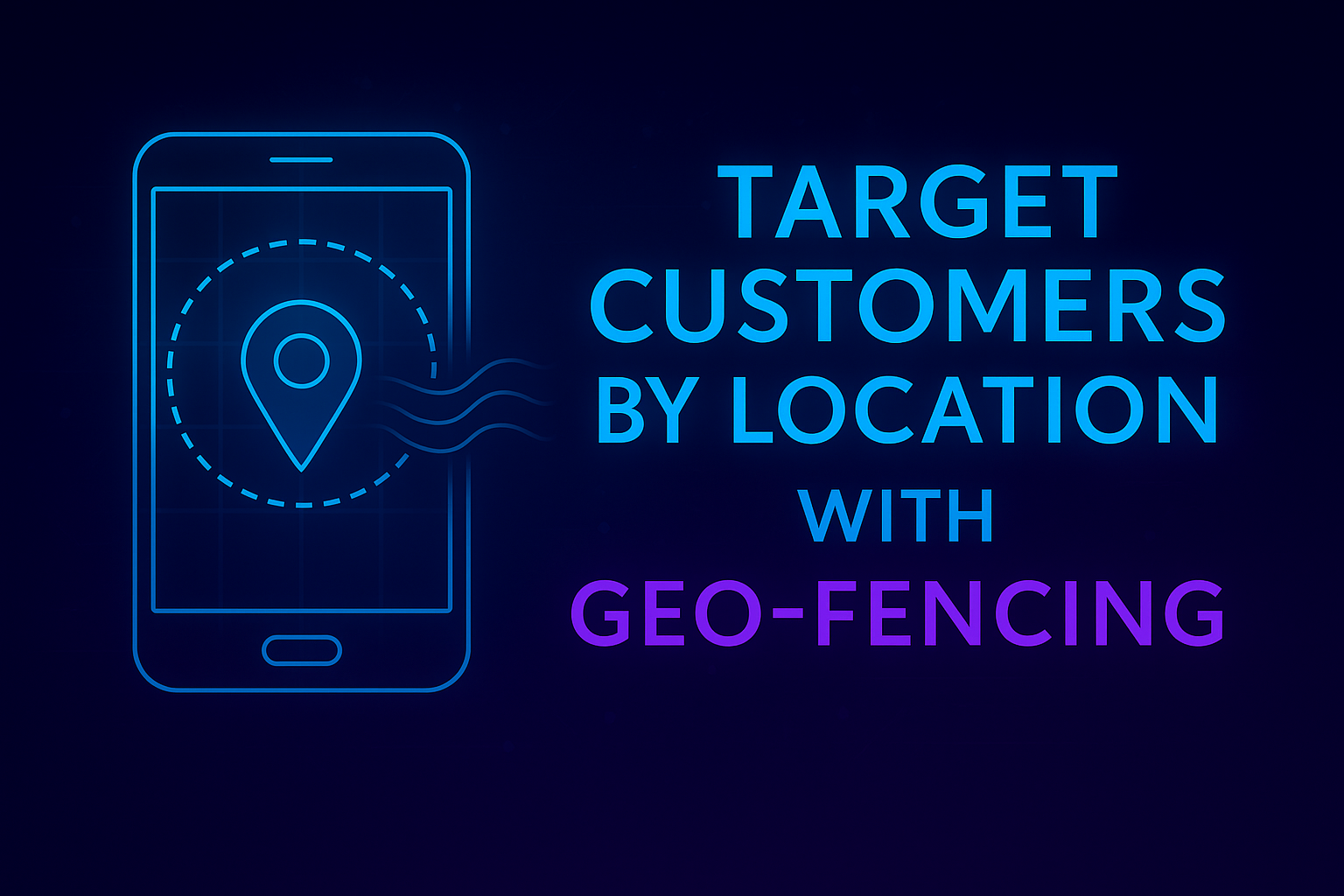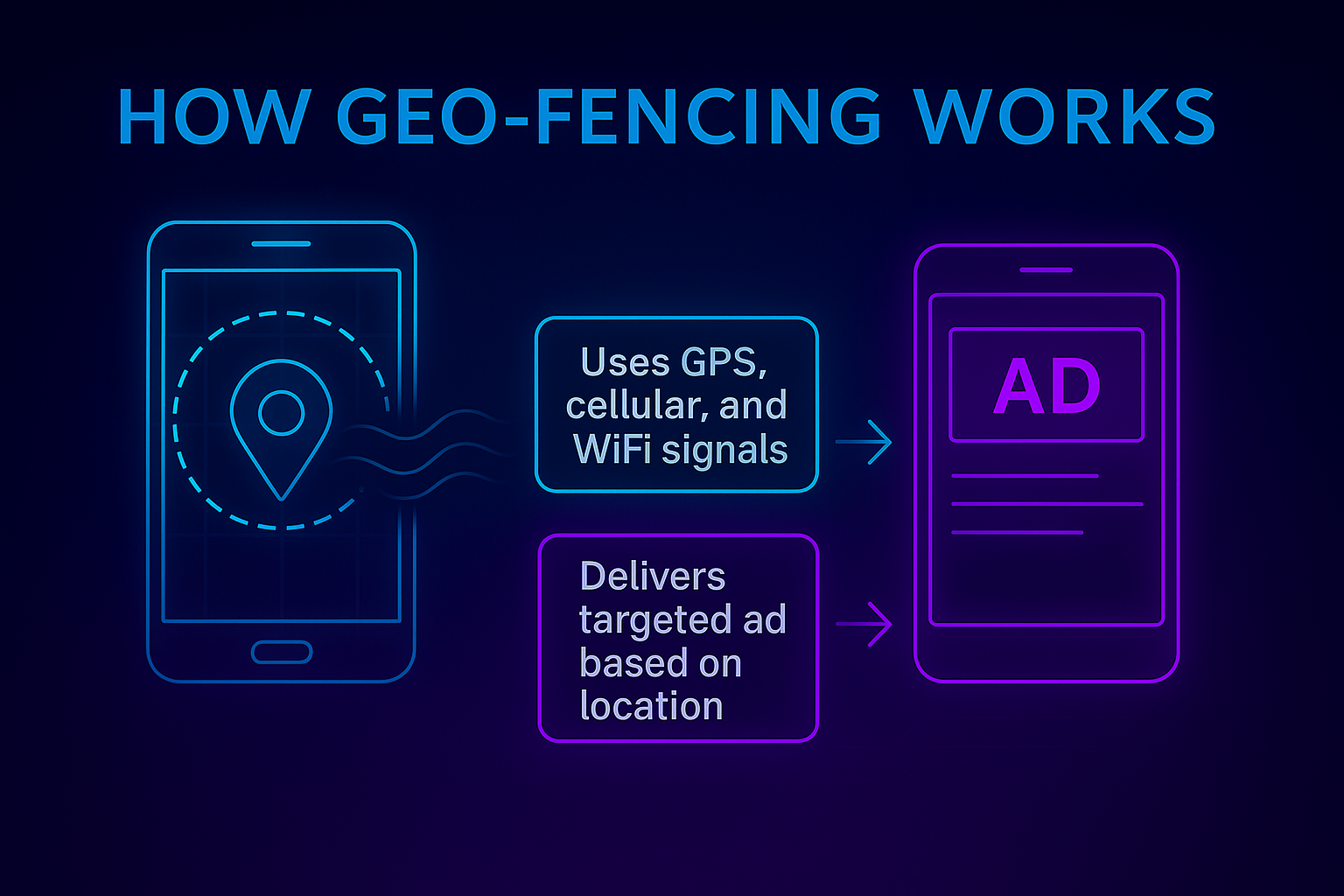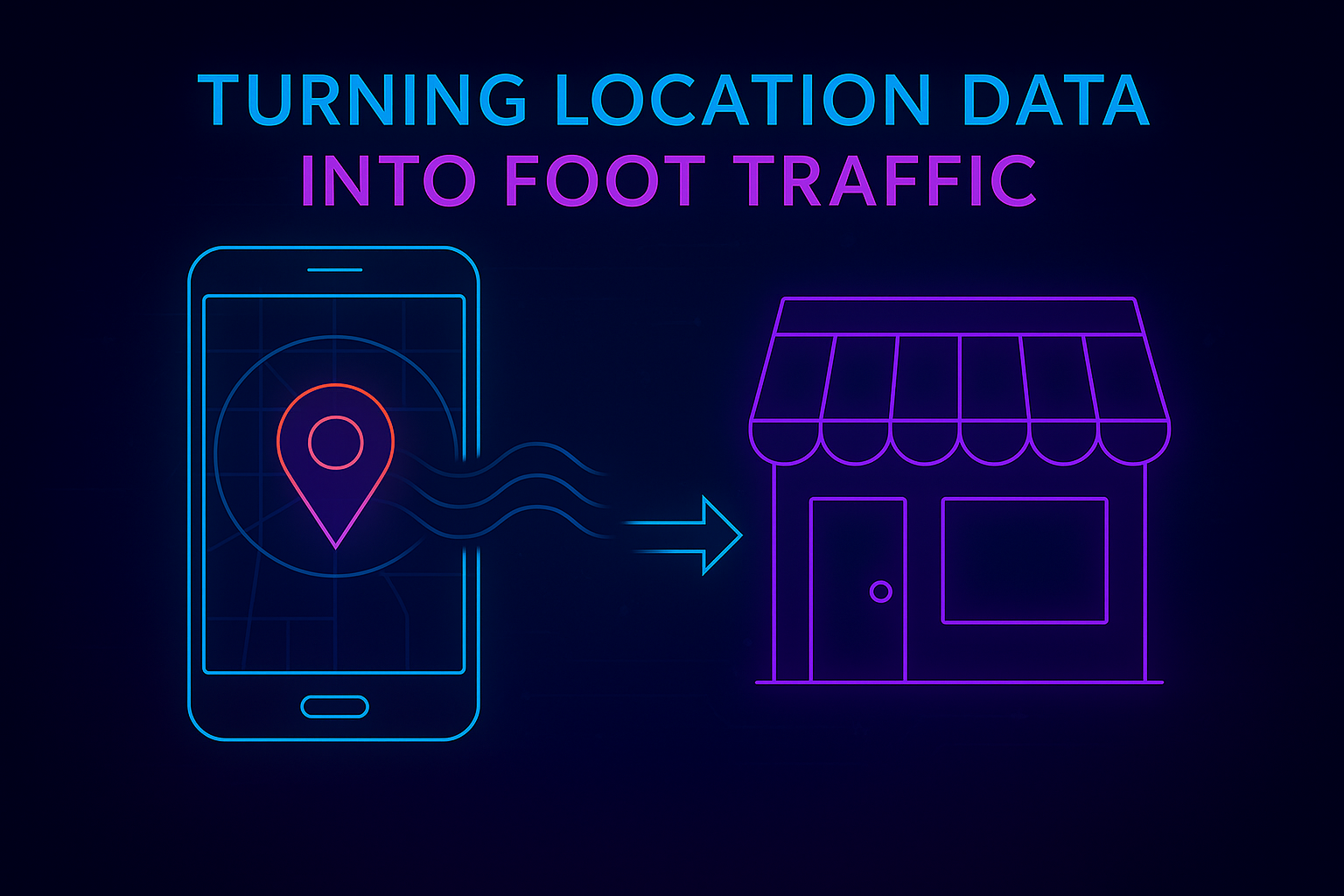
 STRATEGY CALL
STRATEGY CALL
Edmonton businesses are discovering that successful online advertising in Edmonton strategies go far beyond casting a wide net and hoping for the best. The real game-changer lies in precision targeting through geo-fencing and hyperlocal advertising techniques that connect brands with customers at exactly the right place and time. These location-based marketing approaches allow businesses to create highly relevant, contextual experiences that drive foot traffic, boost conversions, and maximize return on advertising investment. Ready to transform your local marketing strategy and tap into the power of location-based advertising? Contact Smart WSI Marketing today to discover how geo-fencing and hyperlocal ads can revolutionize your business growth.
Geo-fencing technology allows Edmonton businesses to create virtual boundaries around specific locations and deliver targeted ads to potential customers who enter these zones. This precision targeting connects brands with customers at exactly the right place and time.
Geo-fencing bridges the gap between digital advertising and physical customer behavior, offering Edmonton businesses unprecedented ability to reach customers when purchase intent is highest. Success requires balancing personalization with privacy while creating genuinely valuable location-based experiences.
Geo-fencing represents a fundamental shift in how businesses approach online advertising in Edmonton campaigns, moving from broad demographic targeting to precise location-based engagement. This innovative technology creates virtual boundaries around specific geographic areas, enabling businesses to deliver targeted messages to potential customers who enter predefined zones. The sophistication of modern geo-fencing systems allows Edmonton businesses to create multiple overlapping boundaries, each triggering different marketing messages or promotional offers based on user behaviour patterns and location data.
The mechanics behind geo-fencing technology involve a combination of GPS, cellular data, WiFi signals, and beacon technology to create accurate location awareness. When implementing digital advertising solutions for Edmonton businesses can rely on, the system continuously monitors mobile device locations and triggers predetermined actions when users cross virtual boundaries. These boundaries can range from small areas around a single storefront to larger zones encompassing entire neighbourhoods or districts within Edmonton.
The technology works by establishing coordinate-based perimeters that correspond to real-world locations relevant to your business objectives. Mobile applications and web browsers with location services enabled communicate with geo-fencing platforms, providing real-time location data that triggers advertising campaigns. This seamless integration ensures that your online advertising efforts in Edmonton reach customers when they're most likely to take action, whether that's visiting your store, attending an event, or engaging with your services.
Location-based targeting leverages sophisticated algorithms that analyze movement patterns, dwell time, and frequency of visits to specific areas. These systems can distinguish between someone quickly passing through a location versus someone who spends significant time in an area, allowing for more nuanced targeting strategies. Edmonton businesses can benefit from understanding that geo-fencing technology considers factors like time of day, day of week, and seasonal patterns to optimize message delivery timing.
The science extends beyond simple location detection to include predictive analytics that forecast customer behaviour based on historical location data. Advanced geo-fencing platforms can identify patterns such as regular commute routes, shopping habits, and leisure activities, enabling businesses to anticipate customer needs and deliver relevant messages proactively. This predictive capability transforms Edmonton online advertising campaigns from reactive to proactive, positioning businesses ahead of their competition in customer engagement.
Creating effective virtual boundaries requires strategic planning that aligns with your business objectives and customer journey mapping. The process begins with identifying high-value locations relevant to your target audience, which might include competitor locations, complementary businesses, event venues, or areas with high foot traffic. Online marketing and advertising success in the Edmonton region depends on choosing boundary sizes that balance reach with relevance, typically ranging from 100-meter radius for small businesses to several kilometers for larger service areas.
The setup process involves defining trigger events, such as entry, exit, or dwell time within boundaries, and determining appropriate responses for each scenario. Businesses can create layered geo-fencing strategies that include immediate triggers for users entering a boundary, follow-up messages for extended stays, and re-engagement campaigns for users who leave without taking action. This comprehensive approach ensures that Edmonton online marketing and advertising efforts maintain consistent customer engagement throughout the entire location-based experience.

Edmonton's diverse business landscape provides numerous opportunities for strategic geo-fencing implementation across various industries and applications. Local businesses can leverage location-based targeting to create highly relevant customer experiences that drive immediate action and long-term loyalty. Understanding these use cases helps businesses identify the most effective applications for their specific industry and customer base.
Retail establishments and restaurants represent ideal candidates for geo-fencing applications, as these businesses rely heavily on foot traffic and location-based decision making. Online advertising services Edmonton retailers can implement include targeting customers near competitor locations with special offers, sending lunch specials to office workers during mealtimes, or promoting seasonal merchandise to shoppers in nearby malls. Restaurants can create geo-fences around business districts to reach professionals during lunch hours, target entertainment districts during evening hours, or engage customers near complementary businesses like movie theatres or shopping centers.
The effectiveness of these applications lies in their ability to reach customers when purchase intent is highest. A customer walking past a restaurant during dinner time is significantly more likely to be interested in dining options than someone browsing social media at home. This contextual relevance dramatically improves conversion rates and return on advertising spend, making online advertising services Edmonton businesses invest in more effective and profitable.
Event marketing presents unique opportunities for geo-fencing applications, as events create temporary concentrations of engaged audiences with specific interests. Display advertising Edmonton event strategies can include targeting attendees at conferences, festivals, sporting events, or concerts with relevant products or services. Businesses can create geo-fences around event venues to reach attendees before, during, and after events, extending the marketing impact beyond the event duration.
Event-based geo-fencing allows businesses to tap into the shared interests and demographics of event attendees, creating highly targeted audience segments. For example, a fitness equipment retailer could target attendees at marathon events, while a technology company might focus on conference attendees in their industry. This approach ensures that display advertising Edmonton campaigns reach audiences with demonstrated interest in related products or services, improving engagement rates and conversion potential.
Service-based businesses can leverage hyperlocal targeting to reach customers when they're most likely to need specific services. Home improvement companies can target homeowners in specific neighbourhoods, automotive services can reach drivers near major highways or shopping centers, and healthcare providers can engage potential patients in relevant geographic areas. The key advantage for service businesses lies in reaching customers at moments when service needs are most apparent or urgent.
Hyperlocal targeting enables service businesses to create highly relevant messaging that addresses location-specific needs or concerns. A landscaping company might target specific neighbourhoods during spring months, while a snow removal service could focus on areas experiencing heavy snowfall. This geographic relevance, combined with temporal targeting, creates powerful marketing opportunities that traditional advertising methods cannot match.
The implementation of geo-fencing and hyperlocal advertising must carefully balance marketing effectiveness with user privacy protection and regulatory compliance. Edmonton businesses must navigate complex privacy landscapes while maintaining customer trust and delivering valuable location-based experiences. Understanding these considerations is essential for sustainable and ethical online advertising Edmonton practices.
Privacy regulations governing location data collection and usage continue to evolve, requiring businesses to stay informed about current requirements and best practices. Digital advertising solutions Edmonton businesses implement must comply with federal privacy legislation, provincial regulations, and industry-specific requirements that may apply to their operations. These regulations typically require explicit consent for location data collection, clear disclosure of data usage purposes, and options for users to opt out of location-based tracking.
Compliance involves implementing technical measures such as data encryption, secure storage protocols, and regular data audits to ensure location information remains protected. Businesses must also establish clear data retention policies that limit how long location data is stored and ensure secure deletion when data is no longer needed for legitimate business purposes. These measures protect both customers and businesses from potential privacy breaches while maintaining the effectiveness of location-based marketing campaigns.
Transparency in data collection practices builds customer trust and improves long-term relationships while supporting more effective marketing campaigns. Customers who understand how their location data is being used and believe they receive value in return are more likely to consent to location tracking and engage with location-based advertising. This transparency should include clear explanations of what data is collected, how it's used, and what benefits customers receive from sharing their location information.
Building trust requires consistent communication about privacy practices and providing customers with control over their data sharing preferences. Businesses should offer easy-to-use privacy settings that allow customers to adjust their location sharing preferences and provide clear instructions for opting out of location-based marketing if desired. This approach demonstrates respect for customer privacy while maintaining opportunities for those who choose to participate in location-based marketing programs.
Effective location-based marketing requires finding the right balance between personalization and privacy protection, ensuring customers receive relevant experiences without feeling their privacy has been compromised. This balance involves collecting only the location data necessary for legitimate business purposes and using that data to create valuable customer experiences rather than intrusive surveillance. Edmonton businesses can achieve this balance by focusing on broad location categories rather than precise tracking and by ensuring location-based messages provide clear value to recipients.
The key to successful balance lies in making personalization feel helpful rather than invasive, which requires understanding customer expectations and preferences within your specific market and industry. Customers are generally more accepting of location-based marketing when they perceive clear benefits, such as relevant offers, convenient service options, or valuable information about nearby opportunities. This customer-centric approach to personalization ensures that privacy protection enhances rather than hinders marketing effectiveness.

The success of hyperlocal advertising campaigns depends on creating compelling, contextually relevant messages that motivate immediate action from geographically targeted audiences. Conversion focused ad campaigns Edmonton businesses develop must consider the unique characteristics of location-based marketing, including shortened decision timelines, increased urgency, and heightened relevance expectations from customers who receive location-triggered messages.
Effective local messaging for online advertising services Edmonton campaigns requires understanding the specific context and mindset of customers in targeted locations. Messages should acknowledge the customer's current location and provide immediate value or relevance that justifies the interruption of their current activity. This might include highlighting proximity benefits, offering location-specific promotions, or providing information about nearby services or opportunities that align with their current context.
The most successful local messages combine location relevance with clear value propositions and strong calls to action that are easy to complete from mobile devices. Messages should be concise and scannable, as location-based ads often reach customers who are actively moving or engaged in other activities. Including specific local landmarks, neighbourhood references, or community connections can increase message relevance and improve engagement rates.
Visual elements in display advertising Edmonton campaigns must be optimized for mobile viewing and quick comprehension, as most location-based ads are delivered to mobile devices. Creative elements should include clear branding, compelling visuals that communicate value quickly, and prominent calls to action that are easy to tap on small screens. The creative should also consider the context in which it will be viewed, such as outdoor lighting conditions or distracted viewing environments.
Successful display advertising Edmonton creative often includes location-specific elements such as local imagery, neighbourhood references, or culturally relevant content that resonates with Edmonton audiences. A/B testing different creative variations helps identify which visual elements, messaging approaches, and call-to-action formats generate the highest conversion rates within specific geographic areas and audience segments.
Location-based advertising timing requires careful consideration of customer behaviour patterns, business operations, and competitive dynamics within targeted areas. The optimal timing for geo-fencing campaigns often differs significantly from traditional digital advertising, as location-triggered messages should align with natural decision-making moments rather than arbitrary scheduling. This might mean targeting lunch spots during mealtimes, retail locations during shopping hours, or service businesses when customers are most likely to need assistance.
Frequency management becomes especially important in location-based campaigns, as customers may enter and exit geo-fenced areas multiple times, potentially creating over-exposure to marketing messages. Effective frequency capping ensures customers receive enough exposure to remember your message without becoming annoyed by repetitive advertising. This balance requires ongoing monitoring and adjustment based on customer feedback and campaign performance metrics.
The unique advantage of location-based advertising lies in its ability to track and measure offline conversions resulting from digital campaigns, providing clear connections between online advertising Edmonton investments and real-world business results. This measurement capability enables businesses to optimize campaigns based on actual foot traffic generation rather than relying solely on digital engagement metrics.
Attribution modeling for location-based campaigns requires sophisticated tracking systems that can connect digital ad exposure with physical store visits or location-based actions. Online marketing and advertising Edmonton attribution models must account for various factors that influence the customer journey, including time delays between ad exposure and store visits, multiple touchpoints across different channels, and varying customer behaviour patterns within different geographic areas.
Effective attribution models typically include view-through attribution for customers who see ads but don't immediately click, as well as cross-device tracking to account for customers who see ads on one device but visit locations with different devices. These models help businesses understand the full impact of their location-based campaigns and make data-driven decisions about budget allocation and campaign optimization.
Measuring conversion focused ad campaigns Edmonton success requires specialized tools that can track both digital engagement and physical location visits. These tools typically combine GPS tracking, WiFi signal analysis, and mobile device identification to create comprehensive pictures of customer behaviour following ad exposure. Key metrics include foot traffic lift, store visit rates, dwell time within locations, and conversion rates from initial ad exposure to completed purchases.
Advanced measurement tools can also track longer-term customer behaviour patterns, such as return visit frequency, customer lifetime value from location-based acquisitions, and cross-location visitation patterns that indicate broader brand engagement. These deeper insights enable businesses to understand not just immediate campaign impact but also long-term customer relationship development resulting from location-based marketing investments.
The connection between digital engagement and physical store visits requires robust tracking infrastructure that can identify when customers who interacted with online ads subsequently visit physical locations. This connection typically involves mobile device tracking, loyalty program integration, and point-of-sale system coordination to create comprehensive customer journey maps. Understanding these connections helps businesses optimize both digital and physical customer experiences to maximize conversion rates.
Successful connection tracking often requires integrating multiple data sources, including advertising platforms, customer relationship management systems, and in-store analytics tools. This integration enables businesses to understand which digital touchpoints most effectively drive foot traffic and which location-based experiences most successfully convert visitors into customers. These insights inform both advertising optimization and operational improvements that enhance overall customer experience.

Edmonton businesses beginning their geo-fencing journey should follow established best practices that minimize common pitfalls while maximizing campaign effectiveness and return on investment. These practices encompass strategic planning, technical implementation, and ongoing optimization processes that ensure sustainable success with location-based marketing initiatives.
Effective budget allocation for online advertising Edmonton geo-fencing campaigns requires balancing experimentation with proven strategies while maintaining sufficient investment levels to generate meaningful results. New businesses should typically allocate 15-25% of their digital advertising budget to location-based campaigns, allowing for adequate testing while maintaining investment in other proven channels. This allocation should increase as businesses demonstrate positive ROI from geo-fencing initiatives.
Budget distribution should consider factors such as geographic area coverage, target audience size, competition levels, and campaign duration requirements. Businesses should plan for initial setup costs, ongoing campaign management expenses, and measurement tool investments that enable proper performance tracking. Successful budget allocation also includes contingency reserves for scaling successful campaigns or pivoting strategies based on performance data.
The most common pitfalls in digital advertising solutions Edmonton implementation include overly broad targeting that dilutes message relevance, insufficient testing periods that prevent proper optimization, and inadequate privacy compliance that creates legal risks. Businesses often make the mistake of creating geo-fences that are too large, reducing the contextual relevance that makes location-based advertising effective. Another frequent error involves launching campaigns without proper measurement infrastructure, making it impossible to optimize performance or demonstrate ROI.
Technical implementation pitfalls include poor mobile optimization, slow-loading ad creative, and inadequate frequency capping that annoys potential customers. Many businesses also underestimate the importance of customer service integration, failing to prepare staff for increased foot traffic or customer inquiries resulting from successful geo-fencing campaigns. Avoiding these pitfalls requires careful planning, proper technical setup, and ongoing monitoring of both campaign performance and customer feedback.
Scaling hyperlocal marketing strategies requires systematic approaches that maintain effectiveness while expanding reach and sophistication. Successful scaling typically begins with identifying the most effective geographic areas, audience segments, and messaging approaches from initial campaigns, then replicating these successful elements across broader geographic areas or additional customer segments. This process requires robust performance tracking and analysis capabilities that can identify scalable success factors.
Long-term growth strategies should include expanding into new geographic markets, developing more sophisticated audience segmentation approaches, and integrating location-based marketing with other digital and traditional marketing channels. Businesses should also consider developing location-based customer loyalty programs, creating exclusive offers for geographic segments, and building community relationships that enhance local marketing effectiveness. These long-term strategies ensure that hyperlocal marketing continues generating value as businesses grow and market conditions evolve.

Geo-fencing and hyperlocal advertising represent powerful opportunities for Edmonton businesses to connect with customers at precisely the right moment and location, creating highly relevant experiences that drive immediate action and long-term loyalty. The technology's ability to bridge digital marketing with physical customer behaviour provides unique advantages for businesses ready to embrace location-based strategies. Success requires careful attention to privacy considerations, strategic implementation, and ongoing optimization based on performance data and customer feedback.
The future of online advertising Edmonton increasingly relies on businesses' ability to deliver contextually relevant experiences that respect customer privacy while providing genuine value. Geo-fencing and hyperlocal advertising offer proven pathways to achieve these objectives, but success depends on proper strategy development, technical implementation, and ongoing campaign management. Ready to harness the power of location-based advertising for your Edmonton business? Contact Smart WSI Marketing today to discover how our expertise in geo-fencing and hyperlocal advertising can transform your customer acquisition strategy and drive measurable business growth.



